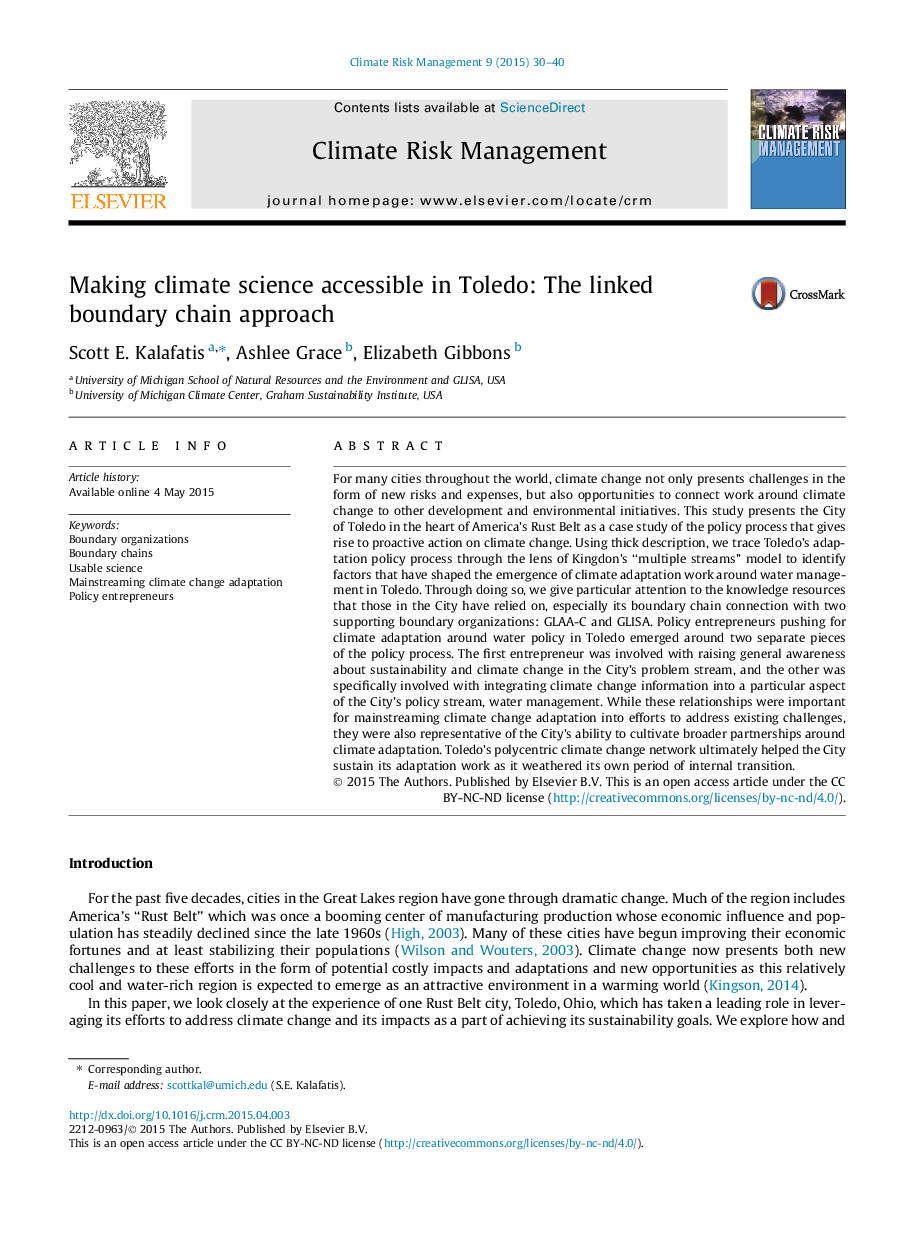| کد مقاله | کد نشریه | سال انتشار | مقاله انگلیسی | نسخه تمام متن |
|---|---|---|---|---|
| 1051253 | 1484883 | 2015 | 11 صفحه PDF | دانلود رایگان |

• Partnerships tailoring climate information for decisions are increasingly common.
• Case study offers view of boundary chain’s role in policy change towards adaptation.
• Toledo adopts and sustains stormwater management adaptation despite transitions.
• Two entrepreneurs play key roles and boundary chain adapts to assist various stages.
• Even with political change, polycentric network helped sustain mainstreamed action.
For many cities throughout the world, climate change not only presents challenges in the form of new risks and expenses, but also opportunities to connect work around climate change to other development and environmental initiatives. This study presents the City of Toledo in the heart of America’s Rust Belt as a case study of the policy process that gives rise to proactive action on climate change. Using thick description, we trace Toledo’s adaptation policy process through the lens of Kingdon’s “multiple streams” model to identify factors that have shaped the emergence of climate adaptation work around water management in Toledo. Through doing so, we give particular attention to the knowledge resources that those in the City have relied on, especially its boundary chain connection with two supporting boundary organizations: GLAA-C and GLISA. Policy entrepreneurs pushing for climate adaptation around water policy in Toledo emerged around two separate pieces of the policy process. The first entrepreneur was involved with raising general awareness about sustainability and climate change in the City’s problem stream, and the other was specifically involved with integrating climate change information into a particular aspect of the City’s policy stream, water management. While these relationships were important for mainstreaming climate change adaptation into efforts to address existing challenges, they were also representative of the City’s ability to cultivate broader partnerships around climate adaptation. Toledo’s polycentric climate change network ultimately helped the City sustain its adaptation work as it weathered its own period of internal transition.
Journal: Climate Risk Management - Volume 9, 2015, Pages 30–40